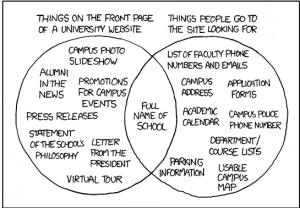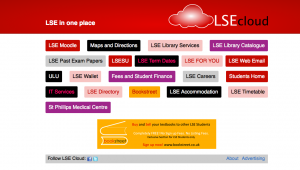Over the past few years we have been following and developing the notion of distributed learning environments. This culminated earlier this year with the publication of the CETIS briefing paper on Distributed Learning Environments and the JISC DVLE programme.
Yesterday all eight of the funded projects made their way (well, actually the level of rain made it feel a bit like swimming) to Bolton for their first meet-up. The programme is divided into two strands, with the first comprising of three projects of six months duration, finishing in December this year. Glasgow Metropolitan College and Glasgow University and concentrating development of a specific widget/VLE plug-in each. Teesside University is taking a more user centric approach by running a number of workshops and then developing widgets from ideas that emerge from them. The other strand is made up of the remaining five projects (MMU, University of Reading, the Open University, University of Edinburgh and Southampton University). These projects are funded for a year, and are investigating the larger issues of integrating more flexible and interoperable approaches to institutional learning environments. More information about the projects is available from the JISC website.
The main technologies in use across the programme are W3C widgets (mainly through using Apache Wookie incubating), Open Social and IMS LTI and Basic LTI and their new Basic Outcomes. To help bring everyone up to speed on each of these a large part of the morning was given our to presentations on each. Ross Gardler (OSS Watch) did the honours for Open Social, Scott Wilson (CETIS) for Wookie and Wilbert Kraan (CETIS) for IMS. Copies of the presentations will be available via the CETIS programme support page over the next day or so. These set the scene for a round of breakout discussions. Mark Stubbs has already blogged about some of the specific security/ authentication/wookie issues the W2C project is grabbling with.
I sat in on the Open Social group where the security issue also came up. Ross argued quite strongly that the technical issues around security have to a large extend been solved outside the education sector and we just need to trust the technology. However, the group did agree that there were cultural issues with education (particularly HE) around knowledge and understanding of identity and authentication which needed to be broken down. We also discussed the possibilities of using open social in a portfolio context. The University of Reading are looking to extend the functionality and interoperability of their in-house developed portfolio tool. The group discussing the IMS options spent quite a bit of time musing over the time/cost implications of developing full LTI integrations over using Basic LTI and the limitations of both – from the wider when will the spec be finalised issue to smaller I can build it but how long will it last, and in the long run does that actually matter?
In the afternoon we had more discussion particularly around wookie implementation. One concern around wookie for a number of projects was its sustainability. As with any (relatively) new technology, sustainability of external systems is a key concern for anyone looking to deploy it in a significant context. However, as Ross pointed out more than once, the fact that wookie in now in part of the Apache foundation, the chances of sustainability are greatly increased. The University of Bolton are also committed to its development and again as with anything, the more use it gets the stronger it becomes.
Along side the more technical discussion there was a concurrent discussion around user-engagement. As explained earlier the Teesside project is very much focussed on gathering real user needs and has designed face to face work shops (adapting templates creating by the RLO CETL and the Sharing the Load project). We discussed many approaches to “paper design” including having print outs of various mobile devices to remind people of the actually size of the finished app/widget. The group all agreed that scope creep, nicely illustrated by Scott Wilson from some recent workshop experience where they found delegates trying to design a whole VLE instead of a specific “thing”, was something that teams needed to be mindful of.
W2C is taking a different approach towards user engagement. They are using an external company to build their first official iphone app (due out sometime next week), followed later in the year by blackberry, android and widget versions. The team are going to use this initial app with students and staff to get feedback and inform future developments. The cost of external development they feel is offset by time savings for the team and gives them something tangible to test with. There also seemed to be a general consensus that actually seeing “the app for that” was incredibly powerful in terms of user engagement – particularly for VCs 
There is a great deal of synergy between the projects and I hope that yesterday provided an opportunity to forge stronger relationships across the programme and beyond. It looks like there will be a number of apps/widgets to share with the community by the end of the year.
CETIS is providing support to the programme and we will be organising a number of open meetings over the next year for other to engage with the projects. So watch the space for more updates and information and if you are involved with similar work, please let us know.
![]() The support of all my colleagues has been invaluable and I’d like to thank Lorna Campbell in particular for taking a risk and hiring me in the first place. I was convinced for quite some time that the decision had been based largely on my shoes . . .
The support of all my colleagues has been invaluable and I’d like to thank Lorna Campbell in particular for taking a risk and hiring me in the first place. I was convinced for quite some time that the decision had been based largely on my shoes . . .

